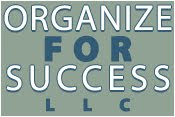The average professional receives over 150 email messages every business day; however, many executives can get upwards of 300 or 400 emails per day. The idea of reading all those emails can be overwhelming, let alone responding or doing anything with them. Quite a few of my clients groan as soon as we start discussing emailing, noting that their emails can be very time-consuming.
Control your email instead of letting it control you. With a few action steps, you can take back power over how much time gets invested in your emails.
- Shift your mentality from "checking" to "processing" so your inbox is never a holding zone and each email is no longer handled more than once, limiting wasted time; move tasks to a running to-do list, appointment requests to your calendar, reference emails to your personal folders and those messages no longer needed to your trash file.
- Employ tools to help... Technological tools like Boomerang, Mailstrom and SaneBox can assist in automating your email processing so it happens without your time doing it.
- Send fewer emails out to get fewer replies back; sometimes, a quick phone conversation can replace multiple, back-and-forth email messages, even if you have to follow that call with a summary email for documentation purposes.
- Unsubscribe from subscriptions you are no longer reading. I realize that deleting an email takes only a second; however, those seconds add up, and the time it takes to unsubscribe is likely less than the accumulation of all the time deleting those multiple messages received. While the content might've been of interest to you when you signed up for it, if your need for that information has changed, take the time to unsubscribe.
- Bundle together when you get the subscriptions you read. If you are subscribed to an eNewsletter via AOL Mail, Gmail, Google Apps, Hotmail, iCloud, MSN, Outlook.com, Windows Live or Yahoo! Mail, you can utilize Unroll.me to get all of the subscription emails received each day in a "rollup", which is one email with all your designated subscriptions that appears in your inbox every day at the time you choose. As you are choosing which emails go into your "rollup", you can unsubscribe directly from Unroll.me with one click. Further, Unroll.me offers this bundled email for free... Yes, that's right; it's free. If you are not already subscribed to lists via one of those email services, simply create a free Gmail account and, then, update your subscriptions with it. For FAQs, click here.
- Strategically utilize rules in your email tool. Whether you check your new messages in Gmail, Mac Mail, Outlook or somewhere else, you can create rules for certain emails to bypass the inbox and go directly to a designated folder. For example, if you get Google Alerts, you could have them culled together into their own folder rather than processing them from your inbox. Likewise, if you have a few VIP contacts needing more immediate responses, give each of them his or her own folder and, then, create a rule for messages from that person to go directly into the specified folder, which will draw your attention into them needing a reply sooner than finding them amidst other messages in the inbox.
- Establish others' expectations. As human-beings, when there is a lapse in information provided, we inherently fill in the blanks ourselves. When it comes to how quickly you are going to get back to someone sending you an email, you probably do not want anyone creating this expectation for him- or herself. When you are clear on your own goals for how you plan to use email as a tool in your productivity toolbox and you are aware of your time constraints for when you will realistically be able to process newly received messages, you can designate what are appropriate expectations. Then, it is your responsibility to clearly communicate those to others, whether it is via initial meetings with new clients, in your email signature or through your actions as you respond to emails at regular intervals each workday.
Do you find email time-consuming? If so, which of these tactics will you implement to better control your email?
Subscribe to:
Post Comments (Atom)


No comments:
Post a Comment